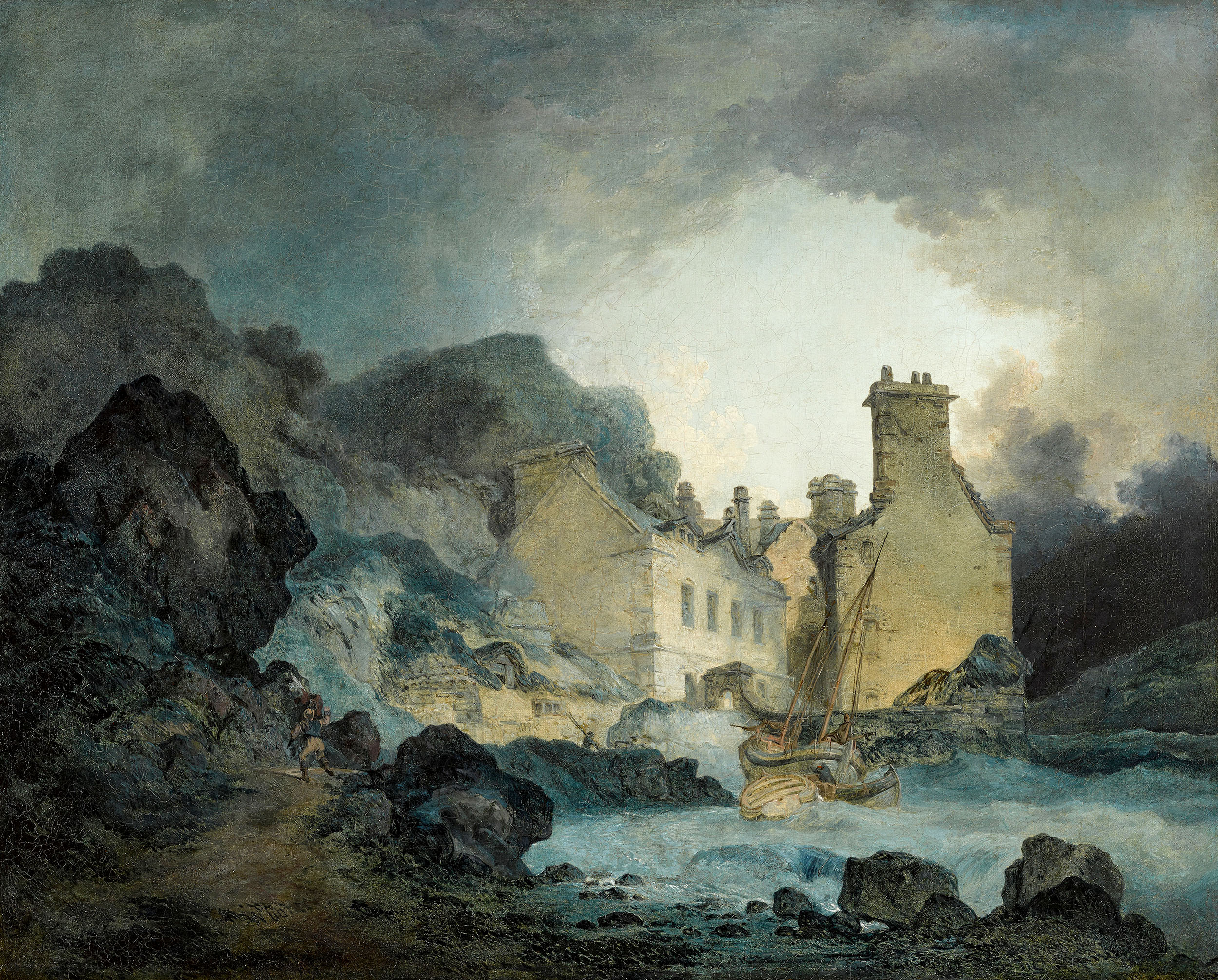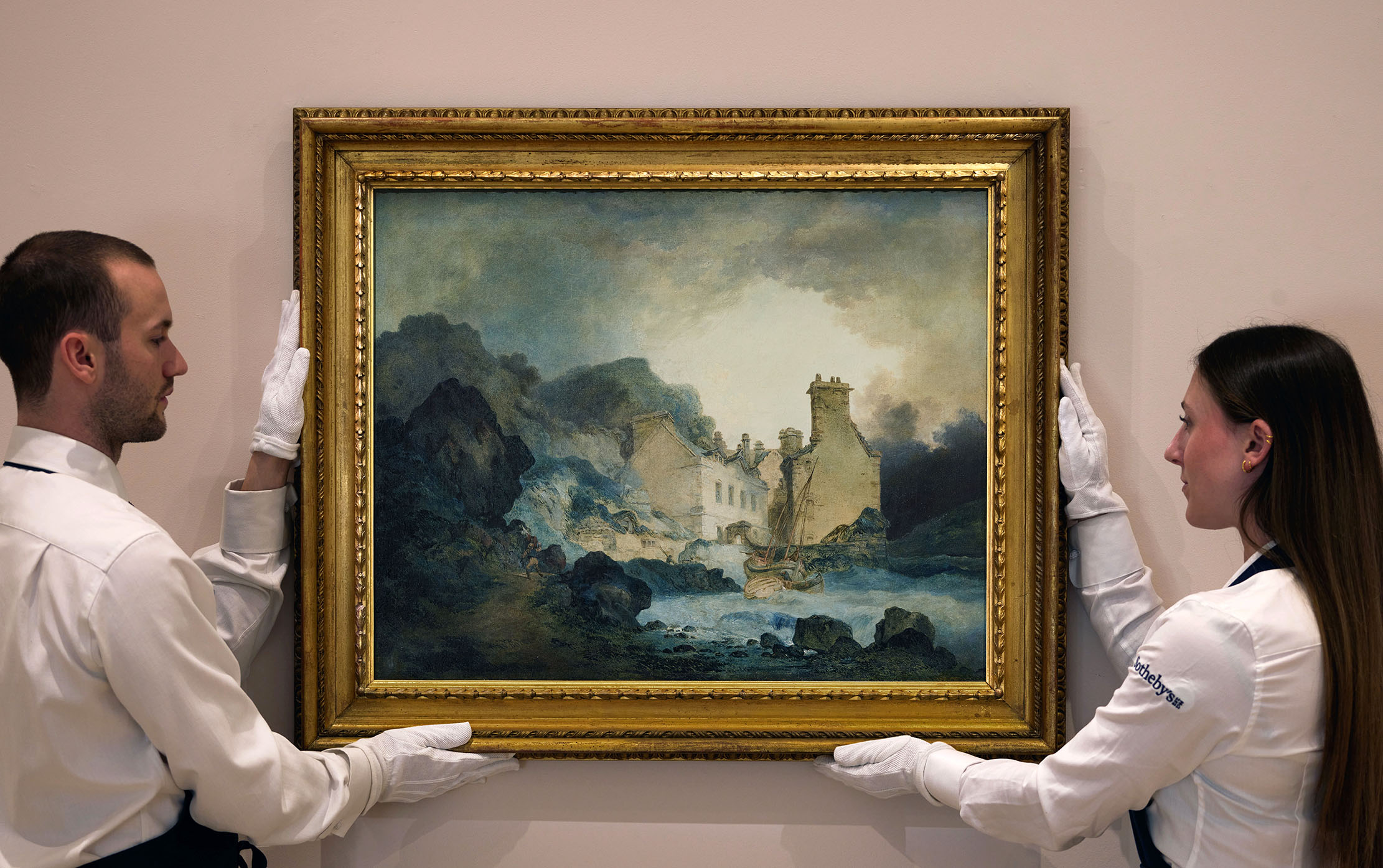This obscure and unloved picture that turned out to be Turner's first oil painting — and it's about to sell for 500 times what it last cost
JMW Turner's 'The Rising Squall, Hot Wells, from St Vincent’s Rock, Bristol' was lost and forgotten for years — but now it's been rediscovered, and is going under the hammer in July.

202 years ago, at the Royal Academy's summer exhibition, an oil painting was exhibited by a precocious young artist. His name? Joseph Mallord William Turner.
'The Rising Squall, Hot Wells, from St Vincent’s Rock, Bristol' — which depicts a popular hot spring and spa house beside a turbulent seascape, beneath a dramatic evening sky — had been painted by the 17-year-old Turner, and became the artist's first oil painting to go on public display. For years it was recorded and recognised as one of his earliest works, being mentioned in his earliest biographies and, in due course, his obituaries.
Yet the painting fell into obscurity, so much so that it was forgotten even by scholars of the artist, and mistaken in the literature as a watercolour rather than his first work in oils. Instead, a 1796 painting called 'Fisherman at Sea' became erroneously recognised as Turner's first oil painting.
The Rising Squall disappeared from public view entirely in the mid-19th century and languished for 150 years in private collections. And it might still be doing so if it weren't for an auction last April at Dreweatts. The auctioneer listed the painting under the name 'House by the water under a stormy sky', credited to a 'follower of Julius Caesar Ibbetson.' The Guardian reports that the painting came up short of its £600-£800 estimate, but thankfully it found a buyer who loved the painting enough to have it cleaned and restored — at which point, Turner's signature was discovered on the canvas.

The painting was thought to be by 'a follower of Julius Caesar Ibbetsen' until restoration work uncovered Turner's signature.
Now, 15 months later, the painting's full story has been unearthed. It was likely painted for Reverend Robert Nixon, a friend and early patron of Turner (and, according to Sotheby's notes, a customer of his father’s barbershop), who gave the young artist a place to stay and encouraged him to pursue oil painting.
Such rediscoveries always prompt raised eyebrows, but there seems to be very good evidence that this really is a lost Turner. The work, Sotheby's report, is 'based on an on-the-spot-drawing in his earliest sketchbook and a watercolour both held in the Tate Britain.' They also add that 'the earliest biographies record that it was in [Revd Nixon's] house that Turner’s first oil was painted.'
In short, all the pieces seem to line up perfectly. 'We are as certain as it’s possible to be that this painting is by Turner,' Julian Gascoigne of Sotheby’s told The Guardian, adding that the work has been examined by 'all the leading Turner scholars alive today', and they have 'unanimously endorsed' the Turner attribution.
Exquisite houses, the beauty of Nature, and how to get the most from your life, straight to your inbox.
This discovery is fascinating, casting new light on Turner's early career, and showing astonishing confidence and competence in oil painting at such a young age.
'It was mistaken in the literature for a watercolour – absent from the catalogue of exhibited oil paintings by the artist, and the discourse of his work,' Sotheby's analysis continues.
'Its reemergence now allows viewers and scholars alike to appreciate the startling ambition of this great artist at such an early moment in his career, by which stage he is already demonstrating a level of confidence and competency in oil painting far beyond what was previously known.'
The painting will be exhibited at Sotheby’s from 28 June – 1 July, ahead of the Old Masters & 19th Century Paintings Evening Auction on 2 July, when it will be offered with an estimate of £200,000 – 300,000 — a 500-fold increase on what it sold for just last April.
Toby Keel is Country Life's Digital Director, and has been running the website and social media channels since 2016. A former sports journalist, he writes about property, cars, lifestyle, travel, nature.

